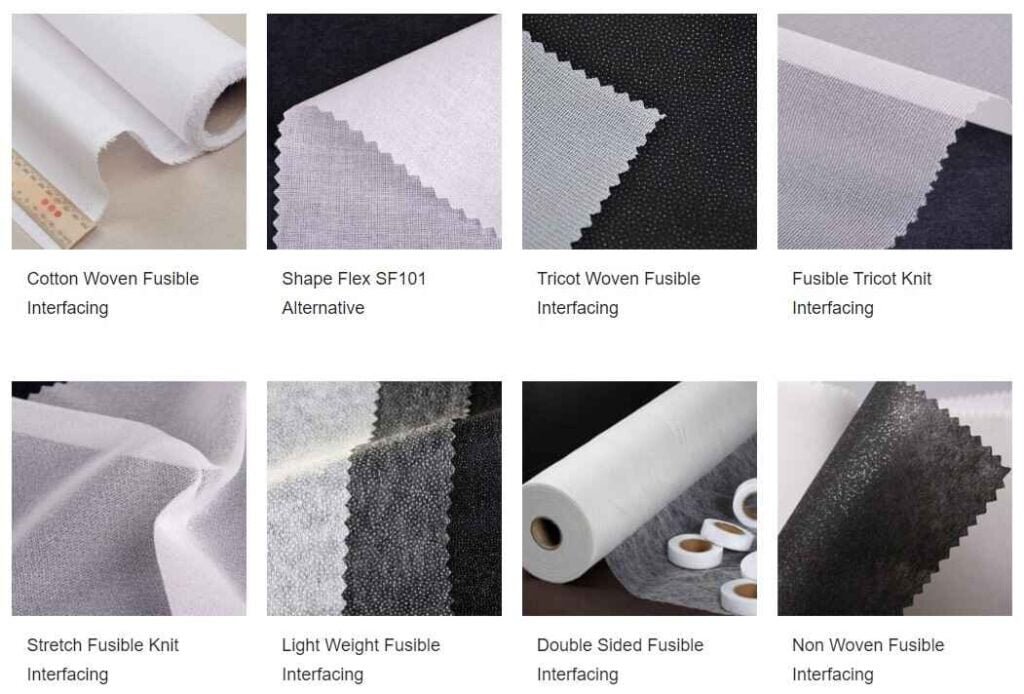10 Key Difference between Lining and Interlining
Last updated on November 27th, 2023 at 11:34 pm
Introduction
Lining and interlining are the most common terms to the fashion designers, apparel manufacturers and consumers. But the terms are so much confusing. These are used to give proper shape and comfort.

Lining is used as the inner layer fabric in a garment. It provides a finished and smooth appearance inside the garment. It is mainly made from lightweight fabrics such as taffeta, sherpa, etc. On the other hand, interlining is used as an extra layered fabric placed between the outer and inner layer of the garment. Both of them serve various functional purposes in garments like warmth, shape retention, etc.
Definition
Lining is a trimming material used as an inner layer in a garment by sewing. It has both functional and aesthetic properties. It is used inside the multilayered garments to provide a smooth feel.
Interlining is a textile material used between shell and lining by sewing or heat transfer process. It serves specific functional purposes. It holds the garments shape, provides extra warmth and stiffness. In formal wear, it is used to add stiffness to collars and cuffs. It is also used to give shape to certain garments, like coats and jackets.
Types of Lining
Traditional linings
Traditional linings are the common linings used to shape garments. These are made from natural fibres like cotton, silk, wool etc. Natural fibres are used for their air permeability and absorbent properties. Cotton fibre is comfortable, breathable and lightweight. Silk fibre gives a luxurious and silky feel against the skin. Wool fibre gives warmth and insulation.
Modern linings
Modern Lining is needed to keep fashion updated with the times. Like polyester, nylon and acrylic are used to make modern linings. These fabrics are durability and wrinkle-resistance. Variety of colors and patterns are available. These are also easy to care, affordable and available in different weights and finishes.
Types of Interlining
Sew-in interlining
It is an additional layer of fabric which is stitched to the main body fabric of the garment by sewing machine. It helps to maintain garment structure and shape. It also provides warmth to the wearer. These are commonly used in garments like winter coats, suits, and structured dresses. These are normally made of lightweight fabrics like flannel, muslin, or batiste.
Fusible or adhesive interlining
It is also an additional layer of fabric which is attached with the garment parts by heat transfer process. These are easy to apply. These provide structure and stability to the garment. They are mainly used in garments collar, cuff and waistband.

Raw Materials (Fibres)
- Silk
- Cotton
- Polyester
- Rayon or Viscose
- Acrylic
- Wool
- Nylon
Difference between Lining and Interlining
| Serial No. | Subjects | Lining | Interlining |
| 01 | Definition | Inner layer of fabric in a garment. | Additional layer between the main fabric and lining. |
| 02 | Placement | It is typically placed inner side of the garment. | It can be found between the main fabric and the lining or within specific layers of the garment. |
| 03 | Attachment | It is attached to the garment through sewing. | It can be sewn, fused, or adhered to the main body fabric of the garment. |
| 04 | Functions | Primarily enhances comfort, durability, and garment structure. It also gives protection against perspiration and body oils. | It adds warmth, improves fabric characteristics, and enhances the garment’s shape. |
| 05 | Visibility | It is often visible when the garment is worn or may be hidden. | It is usually not visible as it is sandwiched between layers. |
| 06 | Fibres | Cotton, Silk, Wool, Polyester, etc. | Cotton, Nylon, Polyester, Viscose, etc. |
| 07 | Fabrics | Lawn, chiffon, satin, voile, crepe de chine, taffeta, sherpa, georgette, etc. | Woven, knit, and non-woven. |
| 08 | Coating | Coating is not necessary. | Coating is necessary. |
| 09 | Removal and Replacement | It can be replaced or removed for repair or style changes. | It is typically not easily removable or replaceable. |
| 10 | Uses | Blazers, coats, jackets, overcoats, bras, panties, etc. | Cuffs, collars, waistbands, and the front part of jacket and coats. |
Hope that after reading this article, you will be able to differentiate between lining and interlining. Don’t forget to put your valuable comment and share.




